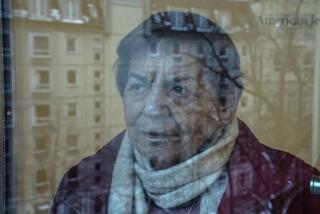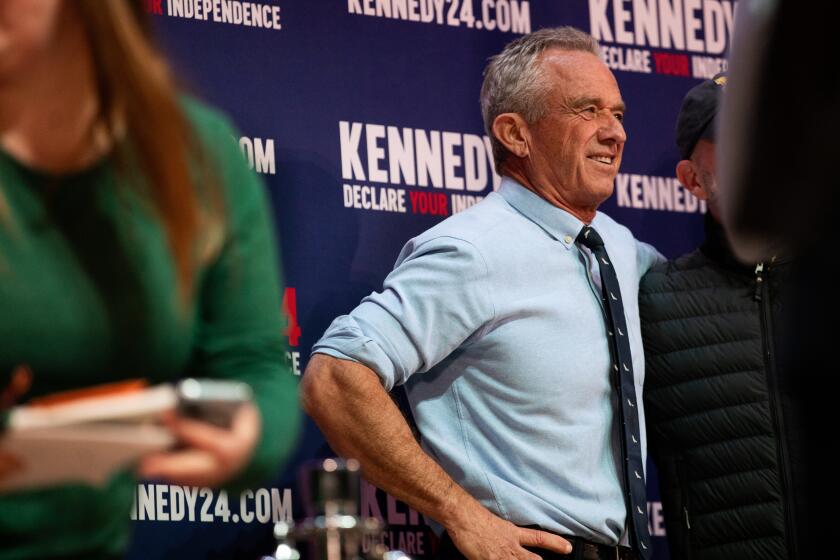A Baghdad street is jammed with memories
The families have lived in these cramped blocks in the heart of old Baghdad for decades. Their ties wind along the boulevard called Kifa Street like the dozens of thin generator wires that run from building to building.
When Hazem abu Ahmed was a boy, his father died and his mother supported him by washing onions for restaurants. The small apartment on Kifa Street would fill with the stinging odor of onions and he would cry. He met his oldest friend, Hadi, when they were children. Ahmed was Sunni and his friend was Shiite, but it didn’t matter. Back then, the nondescript traffic circle on Kifa Street that serves as the marker between the largely Sunni Fadl district to the west and the mainly Shiite neighborhood of Abu Safayeen to the east was just that, a traffic circle.
For the two boys, Baghdad was a place of adventure. They would spend afternoons in city parks and watch action films in Baghdad’s rundown movie theaters. As they grew up, they met at coffeehouses and talked about the girls they had fallen in love with.
After the U.S.-led invasion in 2003, their friendship remained intact, Shiite and Sunni. Kifa Street did too. Then, three years later, insurgents blew up the Shiite Muslim shrine in the town of Samarra, and Kifa Street and its traffic circle became a front line -- people called it “the border” -- in Iraq’s civil war.
“We are damaged,” Ahmed, 45, says, looking at a child dressed as Spider-Man and thinking about how gunmen used to dart from the same alleyway.
Kifa, Arabic for “struggle,” has weathered the ups and downs of Iraq’s recent history, and Ahmed has done so along with it. But this month’s highly contested elections have reignited the country’s simmering sectarian tensions.
The uncertainty makes Ahmed worry that once more his life will be disrupted by Iraq’s political struggles, and that once again he will be robbed of everything he holds dear.
Abandoned work
Ahmed, a welder on the Fadl side of the traffic circle, was building a water tank on that day in February 2006 when word came that the shrine in Samarra, one of the holiest to Shiites, had been bombed. He fled the corner and didn’t return until the fall.
When he did, the water tank still lay where he’d left it, shredded by bullets. He threw it away.
Like others in this stretch of the city, Ahmed calls the era of fighting “the dark period.” He tells of how revenge colored everything: A Sunni Muslim killed a Shiite and then the families wanted retribution; and it never stopped.
He tells of gun battles and of mortar rounds slamming into buildings; and finally, of the Americans blocking off the eastern half of Kifa Street from the western with concrete slabs like tombstones. It all severed him from his old life, from his friends in Abu Safayeen, from his memories of Baghdad.
He tries to erase the worst moments of the dark period. Asked about anyone who was a killer, he says they no longer exist. He says they have died, been jailed or run away.
But everywhere there are reminders. He glances north and recalls how his wife, dressed in an abaya, the long black cloak that many women wear for modesty, walked out of Fadl every day to buy kerosene. She would then sell it to support her unemployed husband. It was too dangerous for the men to leave the district, so they sent their women instead.
When he looks at the roofs, he remembers doing nighttime guard duty to defend Fadl from the Mahdi Army, the militia loyal to radical Shiite cleric Muqtada Sadr. He helped carry the wounded to mosques where makeshift hospitals had been set up. Children such as the ones now playing across the street prepared Molotov cocktails.
But he also remembers the small steps toward peace. The reconciliation meetings on Kifa Street between local Shiite and Sunni leaders; and finally, in the autumn of 2008, a crane lifting away the concrete slabs.
Return of worry
With time, Ahmed tried to forget about the border; to simply call the traffic circle its old name, Lions Square; to forget about the dark period; to just be the son of a butcher on Kifa Street.
Eight months ago, he was toiling away at his workshop when one of his friends from Abu Safayeen, a man named Saleh, appeared. He invited Ahmed to come back to their old coffeehouse.
“He said I shouldn’t be afraid. I trusted him because he is my friend,” Ahmed says.
“They thought I had been killed,” he adds. The two shared stories of how they survived and worried whether the peace would hold.
The men picked up where they left off, visiting each other’s neighborhoods for lunch and coffee. And now, while they wait for the next government to form, they worry some more. Ahmed’s Shiite friends voted for Prime Minister Nouri Maliki’s coalition, and he cast his ballot for the secular slate of former Prime Minister Iyad Allawi.
On a recent night, they smoked apple-flavored tobacco in water pipes at a coffeehouse in Fadl. Some of his Shiite friends sounded nervous about what Maliki might do to stay in power.
Ahmed, fearful about the future, says he would leave Fadl if he had the money, but he has none.
He is resigned to his life here, where his family settled years ago, seeking their fortune in Iraq’s capital.
As he surveys the landscape of chewed-up buildings and gouged columns patched with plaster, Ahmed wonders whether his street could once more become a dead zone.
“I worry that Baghdad will return back to the dark periods,” he says.
And some losses he cannot move past. He thinks about 14 of his friends killed in summer 2007 when they left Fadl to hunt for jobs. Women had to retrieve their bodies from the morgue because the men were too terrified to go. The victims’ heads had been severed and had to be transported in iceboxes because of the heat.
Five of the dead were Shiites, including his oldest friend, Hadi.
Salman is a Times staff writer.
More to Read
Start your day right
Sign up for Essential California for news, features and recommendations from the L.A. Times and beyond in your inbox six days a week.
You may occasionally receive promotional content from the Los Angeles Times.






